Related Research Articles

The American Saddlebred is a horse breed from the United States. This breed is referred to as the "Horse America Made". Descended from riding-type horses bred at the time of the American Revolution, the American Saddlebred includes the Narragansett Pacer, Canadian Pacer, Morgan and Thoroughbred among its ancestors. Developed into its modern type in Kentucky, it was once known as the "Kentucky Saddler", and used extensively as an officer's mount in the American Civil War. In 1891, a breed registry was formed in the United States. Throughout the 20th century, the breed's popularity continued to grow in the United States, and exports began to South Africa and Great Britain. Since the formation of the US registry, almost 250,000 American Saddlebreds have been registered, and can now be found around the world, with separate breed registries established in Great Britain, Australia, continental Europe, and southern Africa.

A Hanoverian is a Warmblood horse breed originating in Germany, which is often seen in the Olympic Games and other competitive English riding styles, and has won gold medals in all three equestrian Olympic competitions. It is one of the oldest, most numerous, and most successful of the Warmblood breeds. Originally a cavalry horse, infusions of more Thoroughbred blood lightened it to make it more agile and useful for competition. The Hanoverian is known for a good temperament, athleticism, beauty, and grace.

The Tennessee Walking Horse is a breed of gaited horse known for its unique four-beat running-walk and flashy movement. It is a popular riding horse due to its calm disposition, smooth gaits and sure-footedness. The Tennessee Walking Horse is often seen in the show ring, but is also popular as a pleasure and trail riding horse using both English and Western equipment. The Tennessee Walking Horse is also seen in movies, television shows and other performances.

The National Show Horse originated as a part-Arabian cross between an American Saddlebred and an Arabian horse. It is now established as a separate breed, since the founding of a breed registry in August 1981. Registered animals today may be the offspring of registered NSH parents or may be a combination between an American Saddlebred, Arabian, and a National Show Horse. Non-NSH mares and stallions must be registered with their appropriate registries, and stallions who are Arabian or Saddlebred must additionally be nominated and approved by the NSHR board of directors. Although any combination of these three breeds may be used, as of December 1, 2009 there must be at least 50% Arabian blood in the horse to be registered, up to 99% Arabian blood.
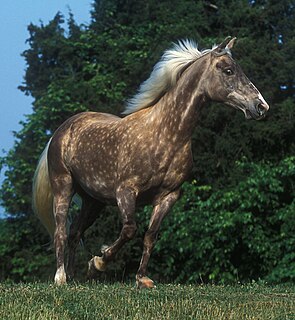
The Rocky Mountain Horse is a horse breed developed in the state of Kentucky in the United States. Despite its name, it originated not in the Rocky Mountains, but instead in the Appalachian Mountains. A foundation stallion, brought from the western United States to eastern Kentucky around 1890, began the Rocky Mountain type in the late 19th century. In the mid-20th century, a stallion named Old Tobe, owned by a prominent breeder, was used to develop the modern type; today most Rocky Mountain Horses trace back to this stallion. In 1986, the Rocky Mountain Horse Association was formed and by 2005 has registered over 12,000 horses. The breed is known for its preferred "chocolate" coat color and flaxen mane and tail, the result of the relatively rare silver dapple gene acting on a black coat, seen in much of the population. It also exhibits a four-beat ambling gait known as the "single-foot". Originally developed as a multi-purpose riding, driving and light draft horse, today it is used mainly for trail riding and working cattle.
The Racking Horse is a horse breed derived from the Tennessee Walking Horse, recognized by the USDA in 1971. It is known for a distinctive singlefoot gait. In 1971, the Racking Horse Breeders' Association of America, headquartered in Decatur, Alabama, was formed as the breed registry. Its goal is to preserve the breed in a natural state with little or no artificial devices that enhance gait. The horse's tail is naturally raised without nicking or tail sets. Some classes allow special shoes that enhance action, and a relatively newer class allows the use of chains, six ounces and under as action devices. The practice of soring, illegal under the Horse Protection Act of 1970, is also seen within the Racking Horse world. Since the breed's inception, about 80,000 Racking Horses have been registered, with the largest populations located in the US states of Alabama and Tennessee.
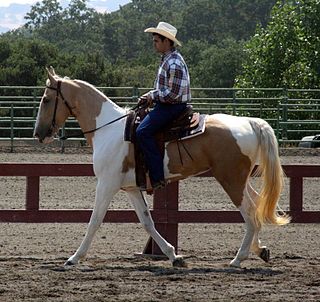
The Spotted Saddle Horse is a horse breed from the United States that was developed by crossing Spanish-American type gaited pinto ponies with gaited horse breeds, such as the Tennessee Walking Horse. The result was a colorful, smooth-gaited horse, used in the show ring and for pleasure and trail riding. Two registries have been created for the breed, one in 1979 and the other in 1985. The two have similar registration requirements, although one has an open stud book and the other is slightly more strict with regard to parentage requirements, having a semi-closed stud book. The Spotted Saddle Horse is a light riding horse, always pinto in color. Solid-colored foals from registered parents may be registered for identification purposes, so their pinto-colored foals have documented parentage. They always perform an ambling gait, rather than a trot, in addition to the gaits of walk and canter, performed by all breeds.
The Virginia Highlander is a small breed of horse with a four-beat ambling gait.
Studbook selection is a process used in certain breeds of horses to select breeding stock. It allows a breed registry to direct the evolution of the breed towards the ideal by eliminating unhealthy or undesirable animals from the population. The removal of individuals from a population is called culling, and does not suggest killing the animal in question. Typically, culls are castrated or they and their offspring are unable to be registered.

The Zweibrücker is a type of German warmblood horse bred in Rhineland-Palatinate and Saarland. Traditionally, the breeding of Zweibrücken was centered on the onetime Principal Stud of Zweibrücken but since 1977 has been under the jurisdiction of the Horse Breeders' Association of Rhineland-Palatinate-Saar (PRPS). The modern Zweibrücker is an elegant, large-framed, correct sport horse with powerful, elastic gaits suitable for dressage, show jumping, eventing and combined driving.
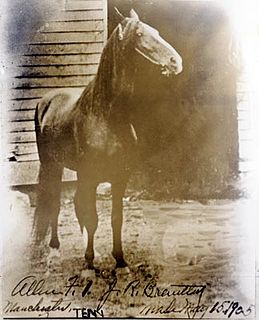
Black Allan or Allan F-1 was the foundation sire of the Tennessee Walking Horse. He was out of a Morgan mare named Maggie Marshall and by Allendorf, a stallion descended from Narragansett Pacer, Canadian Pacer, and Gaited Spanish Mustang imported from Texas. Black Allan was registered as No. 7623 by the American Trotting Registry. Although Black Allan was supposed to be a trotter, he preferred to pace and so never raced. Besides the pace, he performed a lateral ambling gait now known as the running walk. He was a black stallion standing 15 hands, 5 feet high. He was given the designation Allan F-1 when the Tennessee Walking Horse Breeders' Association, precursor to the Tennessee Walking Horse Breeders' and Exhibitors' Association, was formed in 1935. He had multiple owners throughout his life, but his last owners, James Brantley and Albert Dement, were the only ones to recognize Black Allan's use as a breeding stallion. Black Allan sired 111 known foals in his lifetime, among them Roan Allen, registration number F-38, Hunters Allen F-10, and Merry Legs F-4. Black Allan died September 16, 1910, at the age of 29.

The Mountain Pleasure Horse is a breed of gaited horse that was developed in the Appalachian Mountains of Eastern Kentucky. This breed reflects the primitive Appalachian gaited horse type and genetic testing shows them to share ancestry with earlier breeds developed in the region, including the American Saddlebred, the Tennessee Walking Horse and the Rocky Mountain Horse. Some Mountain Pleasure Horse bloodlines are traceable for over 180 years.
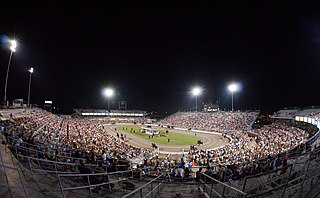
The Tennessee Walking Horse National Celebration (TWHNC), sometimes known as the Celebration, is the largest horse show for the Tennessee Walking Horse breed, and has been held annually in or near Shelbyville, Tennessee since its inception in 1939. The Celebration was conceived by Henry Davis, a horse trainer who along with several other horsemen, felt the Shelbyville area should have a festival or annual event. Although the Celebration was originally held in Wartrace, Tennessee, it moved to Shelbyville, the seat of Bedford County, a few years later. The Celebration spans 11 days and nights in late August and early September annually, and finishes with the crowning of the World Grand Champion Tennessee Walker on the Saturday night before Labor Day. The TWHNC draws an estimated 2,000 horses and 250,000 spectators to Shelbyville each year.
The Tennessee Walking Horse Breeders' and Exhibitors' Association is the oldest breed association for the Tennessee Walking Horse. It was founded in 1935 and is headquartered in Lewisburg, Tennessee. The association also runs the Tennessee Walking Horse Hall of Fame.
The Racking Horse World Celebration is the largest show for the Racking Horse breed. It is held annually in late September at the Celebration Arena in Priceville, Alabama, a few miles outside Decatur. The Celebration encompasses over a week of nightly shows, and includes approximately 170 classes. Over 1,000 horses compete there each year, and spectator attendance is roughly 70,000. The World Celebration's counterpart is the Spring Celebration, held in April at the same location.
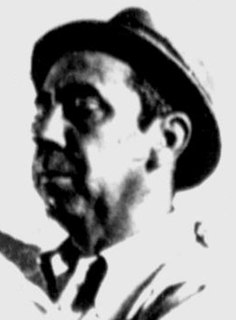
Emerson "Bud" Dunn was a Tennessee Walking Horse trainer from Kentucky who spent most of his career in northern Alabama. He trained horses for over forty years and won his first Tennessee Walking Horse World Grand Championship at age 74 with Dark Spirit's Rebel; at the time, he was the oldest rider to win the honor. He was inducted into the Tennessee Walking Horse Hall of Fame in 1987 and named trainer of the year in 1980 and 1991. In 1999 at age 81, Dunn surpassed his own record for the oldest winning rider by winning his second World Grand Championship, riding RPM. He died of a heart attack in January 2001.
Setting Sun was a Tennessee Walking Horse stallion who competed in his breed's World Grand Championship three times. On his first attempt, in 1956, he placed third; he won the Reserve World Grand Championship in 1957 and the World Grand Championship in 1958. He was trained by Sam Paschal. After his wins, Setting Sun made nationwide television appearances. He died in 1976 and is buried near Newport, Tennessee.

The horse industry in Tennessee is the 6th largest in the United States, and over three million acres of Tennessee farmland are used for horse raising or horse-related activities. The most popular breed in the state is the eponymous Tennessee Walking Horse, and it became an official state symbol in 2000.
Master of Jazz is a Tennessee Walking Horse who won the World Grand Championship in 2007. Originally ridden in amateur horse show classes, he made the transition to professional competition in 2005 and won his breed's largest show, the Tennessee Walking Horse National Celebration, two years later.
Main Power is a Tennessee Walking Horse who won the World Grand Championship in the 2005 Tennessee Walking Horse National Celebration. He had previously been the Three-Year-Old World Champion in two categories, Four-Year-Old World Champion and Reserve World Grand Champion.
References
- 1 2 "Just what is a racking horse? Decatur event celebrates unique breed April 24–27". AL.com. 13 April 2013.
- ↑ "Racking Horse Celebration continues tremendous growth". Times Daily. Retrieved 14 January 2016.
- ↑ "The Free Lance-Star - Google News Archive Search" . Retrieved 31 January 2016.
- 1 2 "RackingHorse".
- ↑ "Cherokee County Herald - Google News Archive Search".
- ↑ "Breeds of Livestock: Racking Horse". Oklahoma State University. 17 March 1997. Retrieved 14 January 2016.
- ↑ Lynghaug, Fran (2009). The Official Horse Breeds Standards Guide. Voyageur Press. ISBN 978-0760338049.
- 1 2 "RHBAA World Celebration". Northalabama.org. Retrieved 15 January 2016.
- ↑ "2015 World Celebration". Rackinghorse.org. Retrieved 15 January 2016.
- ↑ "Racking Horse Spring and World Celebrations Held in Priceville Decatur AL Racking Horse Events". Decatur Morgan County, Alabama.
- ↑ "History". Rackinghorse.org. Retrieved 15 January 2016.